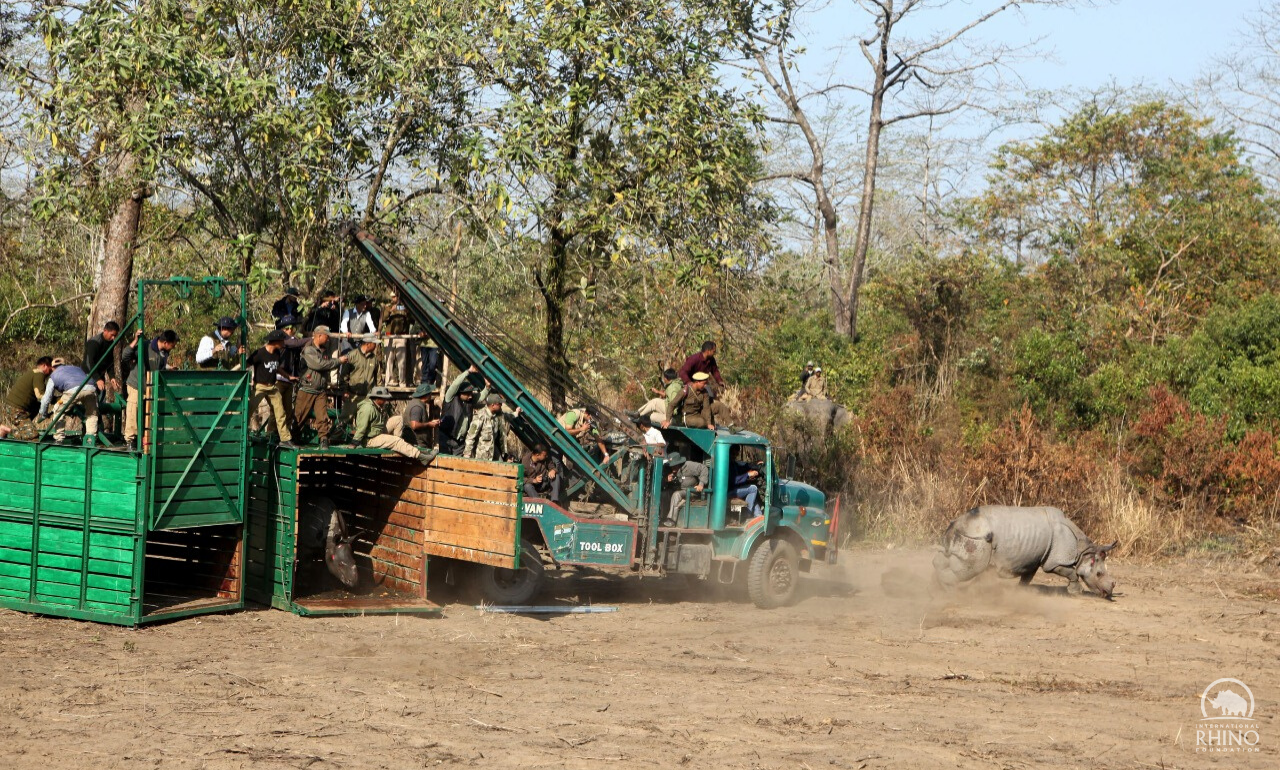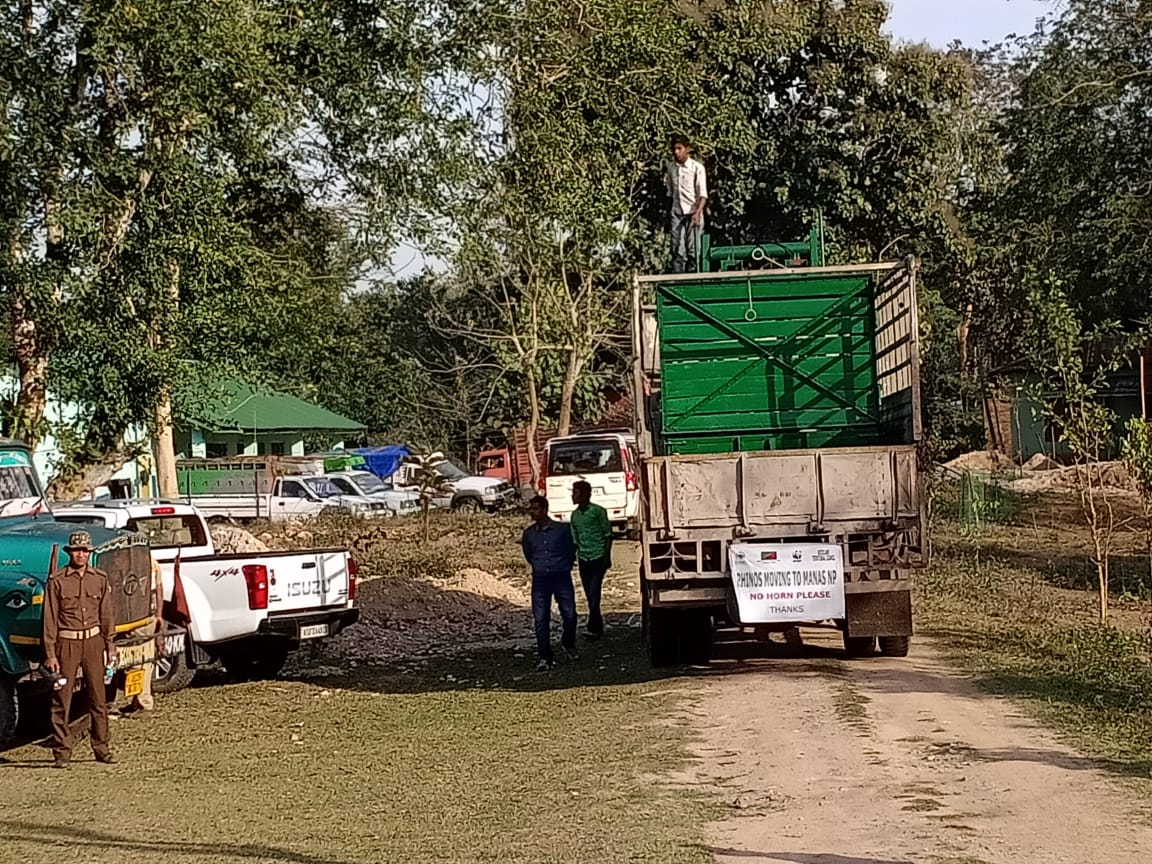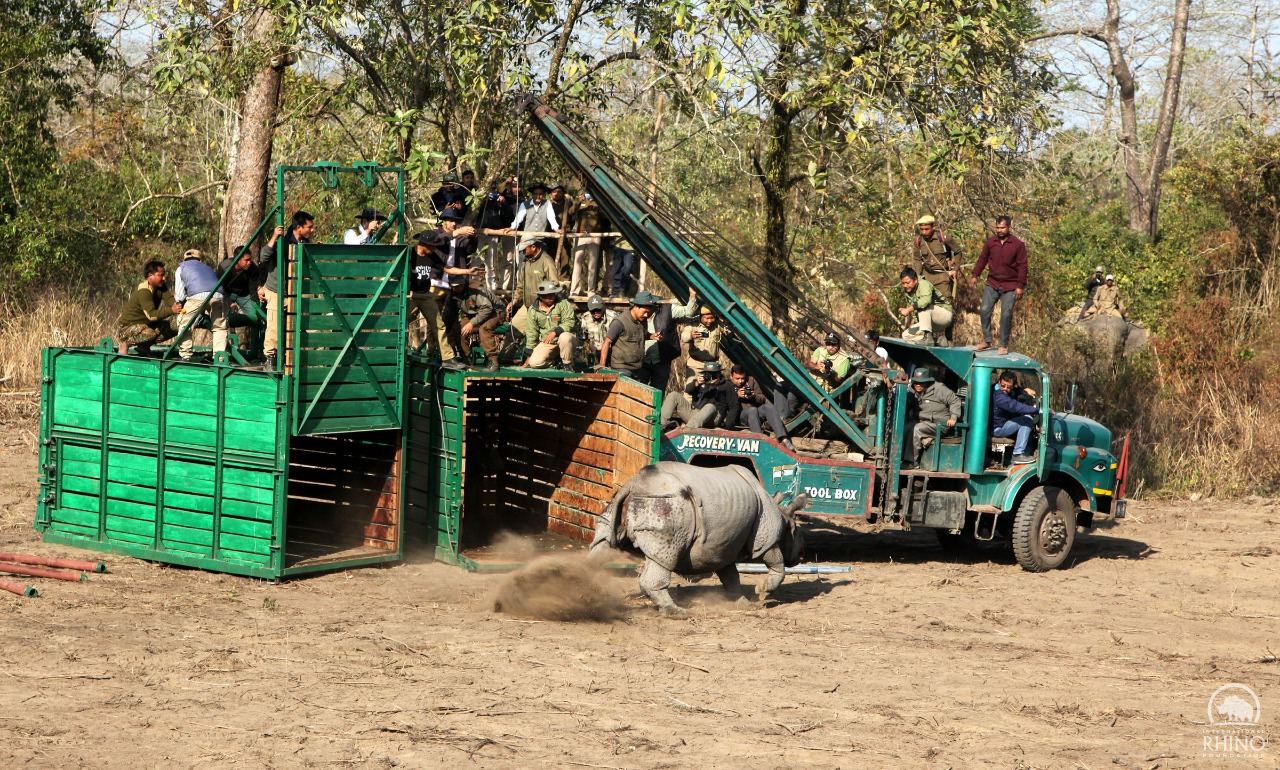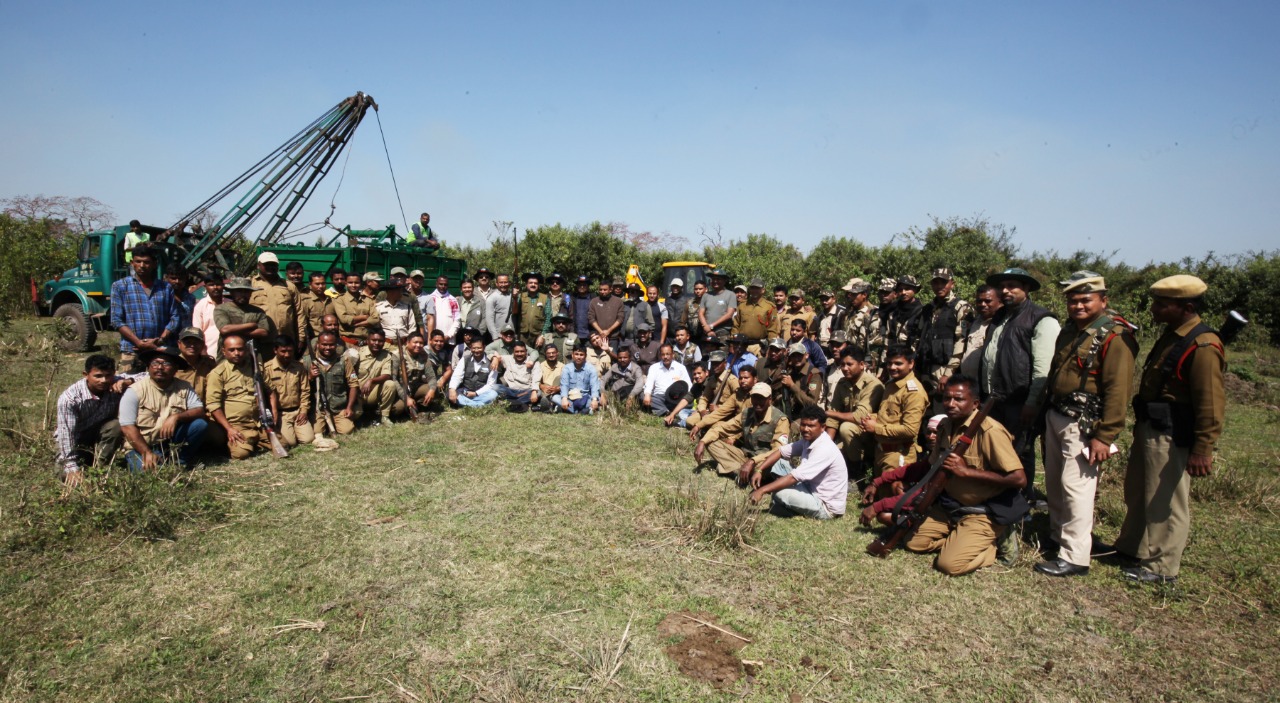Two More Rhinos Arrive at Manas National Park in India
Over the weekend, two sub-adult female greater one-horned rhinos were transported from Kazaringa National Park and released in Manas National Park in Assam, India under the supervision of the Translocation Core Committee, which includes veterinary and security personnel.

The two females increased the population of greater one-horned rhinos in Manas with 40 rhinos now roaming the park. This was the 7th translocation under the guidance of the Indian Rhino Vision 2020 program (IRV2020), which established an initial population of 18 in 2009.
IRV2020 is a joint program of the Assam Forest Department, World Wildlife Fund India, Bodoland Territorial Council and the International Rhino Foundation (IRF) with support from many other organizations. The program was cited as a key factor for Manas regaining its UNESCO World Heritage Site recognition in 2011.

“RHINOS MOVING TO MANAS NP. NO HORN PLEASE. THANKS.”
IRF would like to congratulate the forest department, park officials and the teams of the Translocation Core Committee for the successful translocation. IRV2020 has consistently demonstrated the vision and cooperation of local and national government, wildlife conservation organizations and on-the-ground partners working together to recover habitats and protect rhinos so that they can thrive in the wild.
Greater one-horned rhinos currently number more than 3,600 in India and Nepal. The translocated female rhinos increase the genetic diversity of the Manas population, achieving the goal of a natural and healthy breeding program for the future of the species.

Both rhinos were ear notched as per IUCN/SSC Asian Rhino Specialist guidelines for identification and monitoring. A special team was established in Manas to provide regular monitoring of the rhinos in the park.
These efforts demonstrate that rhinos can recover on their own if they are given adequate space and are free from the outside pressures of poaching and habitat loss.

These were the 19th & 20th translocations of the IRV2020 program and there are two more planned for this year. Building on the success of this 15-year program, partners will gather in the coming months to evaluate the completed plan and determine next steps to ensure the survival of the greater one-horned rhino in India and Nepal.

One thought on “Two More Rhinos Arrive at Manas National Park in India”